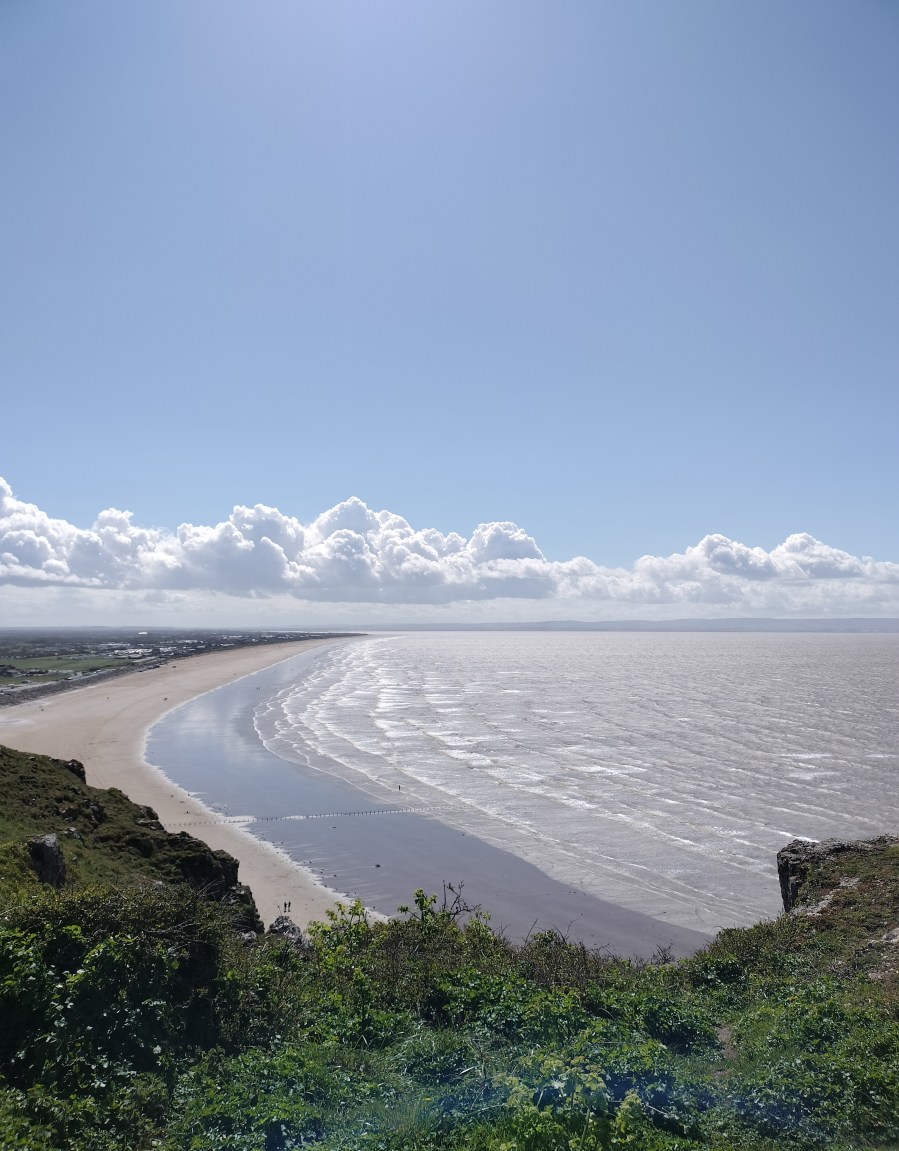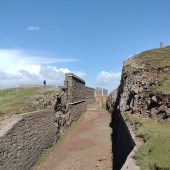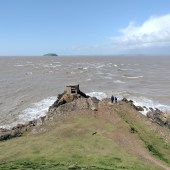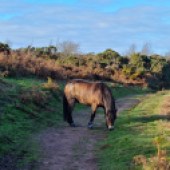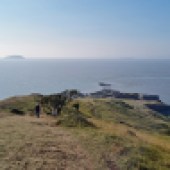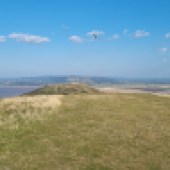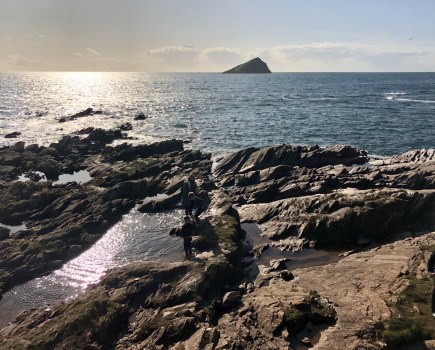A new walking festival takes hikers through the ‘sands of time’ as RACHEL MEAD reveals as she profiles a lesser-known hiking destination.
I’m not sure if one should divulge their secret walking routes in a national magazine but in this instance, I have been overcome to break my silence on what I truly believe is one of our coastline’s hidden walking gems.
Fellow footpath followers, I am going to insist that you pack your backpacks and lace up your hiking boots and head to the west country, on this occasion however, you are not heading to the more ‘well-trodden’ of counties further west but you are in fact alighting in the county of Somerset.
Yes, unbeknown to many, there is in fact a coastline in Somerset it is being celebrated as part of the newly launched Somerset & Exmoor Coast Festival. Various length walks exploring the King Charles III England Coast Path and the South West Coast Path are on the agenda so you’ll be able to embrace the Somerset sea air whilst uncovering the local history and remarkable biodiversity en route. (Oh, and whilst I’m giving away all my secrets, you’ll also want to join the walk which takes you to the Jurassic waterfall at St Audrie’s Bay – shhh!)
The Somerset & Exmoor Coast Festival is focusing on the unique stretch of coastline between Porlock Weir (the first site in England to have attained an ‘A’ classification for pacific oysters) and the home of the natural pier, Brean Down. There are walks to suit all ages and abilities, from short accessible walks to long distance routes tracking across the county, including an ‘80 miles in eight days’ challenge.
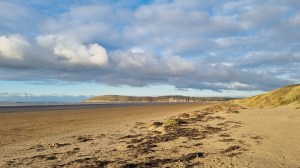
Today, whilst splurging my soul, I am introducing you to a 5km walk at Brean Down, the unique tip of the Mendip Hills which is now recognised nationally and internationally for its incredibly rare sands. Expect a raised heart rate as you make your way up the 300 feet or so, but once you’re on the flat take your time on making it to the peninsula because you will in fact be walking on ‘sands of time’ as the very ground beneath your feet has been accumulating here since the last Ice Age.
Designated as a Site of Special Scientific Interest, a Special Area of Conservation and a Scheduled Monument, Brean Down is a secret which harbours exceptional credentials.
For the naturalists, these shallow soils gift the incredibly rare White Rock Rose, with autumnal treasures of Wild Carrot and Goldilocks Aster also regularly found to be flanking the footpaths. As for the birders, the Severn Estuary is a wetland designated of international importance under the Ramsar convention so don’t forget your binoculars. Autumn sees the return of many over-wintering birds such as wigeon, redshank and ringed plover who re-join the resident oystercatchers and peregrine falcons.
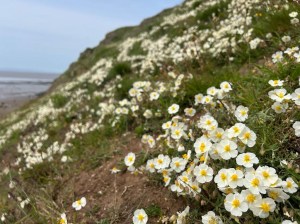
And then, the other marvel about Brean Down is its incredibly diverse social history which is revealed in an array of archaeological finds and architectural structures many of which are visible today. You are still able to walk amongst the footings of a Roman temple, an Iron Age hillfort, Medieval field systems and a mid-19th Century fort.
On approach to the tip of the peninsula the forms of structures will begin to take shape and the strategic positioning of the aged fortifications is clear. It’s likely to be breezy whilst you’re standing out ‘in’ the Bristol Channel, and the force of the second-highest tidal range in the world will be felt in your feet as the waters crash against the limestone cliffs.
It’s invigorating and powerful and captivating, and the combination of our ancestral heritage and diverse ecology are what make Somerset’s Brean Down the secret definitely worth sharing.
Find out more about the Somerset & Exmoor Coast Festival at somersetcoastfestival.co.uk.
MAINTAINING THE SPECIAL LANDSCAPE
With so much diverse flora and fauna, Brean Down requires careful management. Owned by the National Trust since 1954, Joel Bunting is the area ranger for Mid-Somerset.
Joel reveals: “As part of our management plan for the site, we are having to intervene with the scrub encroachment. If we didn’t do this, the site would slowly cover with bracken and bramble and then into a dense scrubby layer of vegetation.
“By using a combination of Roboflail and tractors we can cover wide areas of the site to support the diverse grassland which makes the site so special.
“Our long-term vision for the management of the scrub and grassland is to perfect the use of grazing animals on the site, such as cattle, to naturally control the scrub and grassland balance. This would mean that the management of the site would become more holistic and sympathetic to wildlife and visitors alike.”
THE EVOLVING FORT
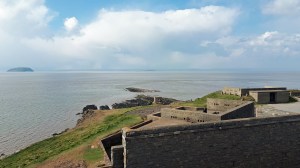
The fort has changed use several times over the years. Originally built as one of five ‘Palmerston’ forts in the 19th century to guard the Bristol Channel against French invasion, it was home to over 50 men.
Between the years 1910-1936 the building was then converted into the Old Fort Picnic Refreshment Rooms for holidaymakers from Weston-Super-Mare. Then in 1941, Brean Down was re-fortified for the war against Germany and it is relics from this period of time which are most visible today.
A large concrete arrow set in the ground was used for target practice, and the rusting rails are remnants from Project Baseball where the military tested their ‘bouncing bombs.’
If you’re interested in going on a walking holiday, check out our selection of 10 Best Peaceful Coastal Walking Breaks.

